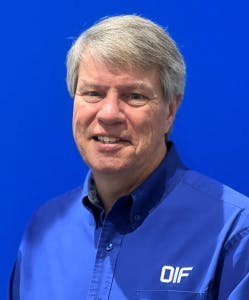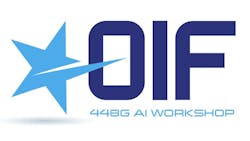OIF outlines 448 Gbps interconnects with the CEI-448G Framework
OIF took the opportunity during its recent Q4 2025 Technical and MA&E Committees Meeting in Busan, South Korea, Nov. 3–7, to release its new Next Generation CEI-448G Framework Document.
Drawing more than 150 technical experts and industry leaders representing every segment of the communications and computing ecosystem, the Busan meeting was held in-person and exclusive to OIF members.
With an eye on enabling interoperability across AI, High-Performance Computing (HPC) and cloud infrastructure, OIF’s CEI-448G Framework Document defines the application spaces, technical challenges and potential solution paths for electrical interfaces operating at 448 Gbps per lane.
Spirit of collaboration
The Framework builds on OIF’s more than 25-year history of implementation agreements (IAs), including CEI-56G, CEI-112G and CEI-224G.
It explores interoperability points and measurement methodologies for future 448G systems, examining advanced modulation schemes such as PAM6 and PAM8, enhanced FEC options, and innovative approaches to managing signal integrity, latency and power at unprecedented speeds.
Nathan Tracy, OIF President (TE Connectivity), said the new framework reflects the organization’s spirit of global collaboration and technical leadership.
“The CEI-448G Framework represents the collective expertise of our members, built through months of dialogue and industry input that began with the 448G Signaling Workshop in April,” he said.
Eying 448G’s next stage
OIF’s release of its Next Generation CEI-448G Framework document builds on the momentum of OIF’s 448G Signaling Workshop, held in April, which brought together a large audience of engineers and researchers from across the ecosystem to assess technology readiness and gather input on modulation, reach and interoperability requirements.
The industry group took insights from the workshop to develop the Framework, which now sets the stage for the next phase of OIF’s 448G initiative — such as developing individual projects for XSR, VSR, MR and LR applications that will define detailed electrical parameters, FEC architectures, test methodologies and interoperability criteria for 448G deployment.
The Busan meeting also featured guest speaker Professor Hoi-Jun Yoo, ICT Chair Professor at KAIST and Director of the AI-PIM Center, who presented “K-AI Semiconductor: Present and Future.” His keynote examined South Korea’s national semiconductor initiatives, the evolution from GPU to NPU to PIM architectures and the synergies between advanced AI semiconductors and next-generation interconnect standards, such as OIF’s CEI-448G.
OIF’s first quarter 2026 Technical and MA&E Committees meeting will take place February 9-13, 2026, in Palm Springs, Calif.
For related articles, visit the Optical Topic Center.
For more information on high-speed transmission systems and suppliers, visit the Lightwave Buyer’s Guide.
To stay abreast of fiber network deployments, subscribe to Lightwave’s Service Providers and Datacom/Data Center newsletters.
About the Author
Sean Buckley
Sean is responsible for establishing and executing the editorial strategy of Lightwave across its website, email newsletters, events, and other information products.



